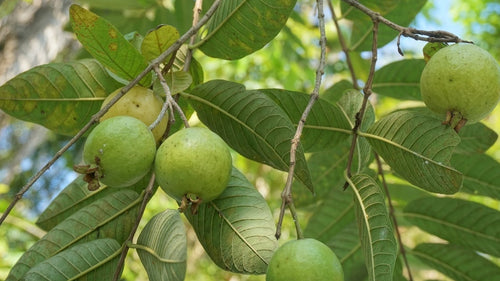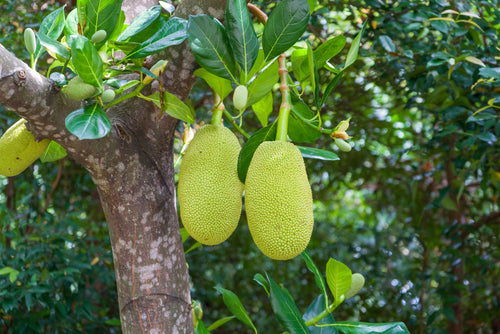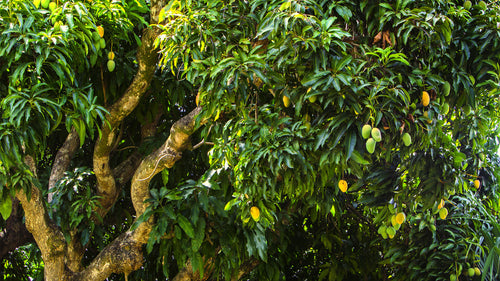B77: Celebrating Fashion and Nature with Every Tree Planted
B77’s tree plantation initiative in the agroforestry concept aligns perfectly with its core values of sustainability and environmental stewardship. By Read more
Digital Forest
Forest with 100 Trees planned
Want to plant your tree now?
Plant a Tree @ 299Trees Planted
B77: Celebrating Fashion and Nature with Every Tree Planted
B77’s tree plantation initiative in the agroforestry concept aligns perfectly with its core values of sustainability and environmental stewardship. By planting a tree with every product purchased, B77 is not only creating fashion that flatters its customers but also fostering a positive environmental impact. The agroforestry model adopted by B77 integrates trees with agricultural practices, offering farmers enhanced income diversification, improved soil health, and reduced farming costs. This approach not only helps restore ecosystems but also promotes resilience in farming communities, ensuring they can thrive in the face of climate change. B77’s commitment to sustainability is reflected in its quality control processes, ensuring that every product is crafted for durability and longevity. Each purchase becomes an opportunity for customers to give back to the planet, reinforcing the belief that just as we have one body, we have one Earth, and both deserve to be cherished and protected. Through this initiative, B77 is empowering its customers to actively contribute to a greener, more sustainable future with every cloth they purchase.
Tree Plantation Date
26th August 2024
Plantation Location
Rajpur, Barwani, MP 451447
Trees Planted
Total Count: 100 Trees
Forest Type: Agroforest
B77’s agroforestry tree plantation initiative integrates sustainable farming practices with environmental responsibility, embodying a commitment to both people and the planet. With every product purchased, B77 plants a tree, contributing to agroforestry systems where trees and crops work together to improve soil health, increase biodiversity, and support farmers. This approach helps enhance farmers’ livelihoods by providing income diversification, reducing farming costs, and improving resilience against climate change. Through this initiative, B77 is not only promoting greener, healthier ecosystems but also creating a lasting impact on farming communities, empowering customers to contribute to a more sustainable future. By linking each purchase to environmental restoration, B77 ensures that its fashion products are part of a broader movement to protect the planet and promote sustainable agricultural practices.
Advantages Of Agroforest
Enhanced Income Diversification
By integrating trees with traditional crops, B77’s agroforestry initiative provides farmers with multiple sources of income. The trees planted alongside crops can yield fruits, nuts, or timber, creating additional revenue streams and reducing the financial risks associated with single-crop dependence. This diversification allows farmers to better weather economic fluctuations and market uncertainties, providing more financial stability.
Improved Livelihood Resilience
The incorporation of trees in farming systems boosts resilience to environmental stresses, such as extreme weather, droughts, and floods. Trees help prevent soil erosion, retain moisture, and improve the overall fertility of the land. This enhances crop yields and secures long-term productivity, ensuring farmers can maintain their livelihoods even in the face of changing climate conditions.
Reduced Farming Costs
Trees contribute to the reduction of farming costs by improving soil health naturally. They enhance soil fertility through nitrogen fixation and organic matter, reducing the need for expensive chemical fertilizers. Additionally, trees provide shade, which can help protect crops from heat stress, reducing the need for irrigation and lowering water usage. This leads to a significant reduction in input costs and promotes sustainable farming practices.
Environmental Restoration
B77’s agroforestry initiative supports environmental restoration by planting trees that help combat deforestation, improve soil structure, and increase biodiversity. Trees contribute to carbon sequestration, reduce greenhouse gas emissions, and improve air quality. By restoring ecosystems and creating greener landscapes, B77 helps mitigate the effects of climate change and fosters a more sustainable environment.
Sustainable Land Use
The integration of trees with crops fosters a more sustainable approach to land use. It prevents land degradation and promotes the long-term health of the soil, which is crucial for maintaining agricultural productivity. This practice also supports wildlife habitats, encouraging biodiversity and maintaining ecological balance on farmlands.
Community Development and Empowerment
B77’s agroforestry initiative supports local communities by creating jobs and promoting sustainable agricultural practices. It empowers farmers by providing training on agroforestry techniques and helping them transition to more sustainable farming models. The initiative fosters a sense of community engagement and environmental stewardship, driving positive change at the grassroots level.
Positive Consumer Engagement
By linking product purchases to tree planting, B77 engages its customers in a meaningful way. Each purchase becomes an opportunity to contribute to the planet’s restoration and support farming communities. This connection between consumer behavior and environmental impact fosters a deeper sense of responsibility and sustainability among customers, further promoting B77’s commitment to a greener, more sustainable world.
Activities During Tree Plantation
ESGs Achieved Through Agroforestry
Environmental (E)
B77's tree plantation initiative in the agroforestry concept significantly contributes to environmental sustainability by promoting the restoration of ecosystems and enhancing biodiversity. Agroforestry practices, which integrate trees with crops, help in improving soil health, preventing erosion, and increasing water retention in the land. The trees planted in these systems also play a crucial role in carbon sequestration, helping to mitigate the effects of climate change by absorbing carbon dioxide from the atmosphere. Additionally, B77’s focus on sustainable farming practices ensures that its tree planting initiative not only contributes to reforestation but also reduces the ecological footprint of agriculture, helping to conserve natural resources and support long-term environmental health.
Social (S)
B77’s tree plantation initiative provides several social benefits by supporting local farming communities and enhancing their resilience. The partnership with farmers in the agroforestry concept empowers them by offering diversified sources of income, which improves their financial stability and reduces their dependency on single-crop farming. This initiative fosters community engagement, as farmers are directly involved in the planning, planting, and maintenance of trees, thereby creating a sense of ownership and responsibility. Additionally, the focus on sustainable farming practices ensures that farmers’ livelihoods are protected against environmental challenges such as soil degradation and climate change, leading to improved social well-being and enhanced food security for their communities.
Governance (G)
B77’s governance approach in its tree plantation initiative upholds strong ethical practices and transparency. The company ensures that all activities, from site preparation to the care of trees, are conducted with strict adherence to sustainable and responsible environmental practices. B77 collaborates with reputable partners, such as Grow Billion Trees, to implement the agroforestry concept effectively, ensuring that all operations are aligned with global sustainability goals. The company’s commitment to monitoring and reporting on the outcomes of its tree plantation initiative demonstrates its accountability in achieving measurable environmental and social impacts. By prioritizing long-term sustainability and transparency, B77 maintains a governance structure that fosters trust among stakeholders and supports the company’s overarching environmental, social, and governance goals.
Trees for Corporates
Trending
Most Popular
1. Sustainable Agroforestry Practices
Sustainable agroforestry practices are the cornerstone of B77's tree plantation initiative. By combining tree planting with crop cultivation, these practices create a harmonious balance between nature and agriculture. Instead of taking from the earth, agroforestry gives back—improving soil health, boosting biodiversity, and sequestering carbon. For farmers, it means more resilient crops and diversified income streams. Imagine a world where farmers can grow their crops, raise livestock, and nurture trees all on the same land! This eco-friendly approach not only mitigates climate change but also ensures a thriving ecosystem. Plus, it helps maintain biodiversity and ensures that our food sources are not only productive but sustainable. It’s like planting a tree and growing a future, all at once. B77, with its focus on sustainable agroforestry, is at the forefront of this green revolution, helping farmers become stewards of the land while reaping the rewards of a more productive and eco-conscious agricultural system.
2. Environmental Impact of Tree Planting
Tree planting has a major environmental impact, and B77’s initiative in the agroforestry concept takes it to the next level. It’s not just about a tree here and there; it's about restoring ecosystems, improving biodiversity, and offsetting carbon emissions. Every tree planted contributes to carbon sequestration—absorbing harmful CO2 from the atmosphere and turning it into oxygen. As part of an agroforest, these trees also help improve soil quality, reduce water runoff, and prevent erosion. The best part? It’s a long-term commitment. Planting trees is like investing in the future of the planet—one sapling at a time. Through B77’s initiative, farmers and communities are empowered to fight climate change while enhancing the health of the environment. Talk about leaving a legacy! As the trees grow, so does the environment’s ability to support life, proving that sometimes, a small tree can make a big difference.
3. Farmer Empowerment in Agroforestry
Farmer empowerment is at the heart of B77’s tree plantation initiative. Through the agroforestry model, farmers aren’t just growing crops—they’re also growing their incomes. By planting trees alongside their traditional crops, farmers gain access to additional revenue streams, such as fruits, timber, and nuts, diversifying their financial base. This reduces their dependency on a single crop, making them more resilient to market fluctuations or environmental challenges. But it doesn’t stop there. Farmers receive training, resources, and ongoing support, ensuring they have the knowledge to thrive. This holistic approach strengthens communities and fosters economic stability, making farmers not just stewards of the land, but also environmental champions. With B77’s initiative, farmers are literally growing their futures—one tree at a time. Now that’s empowerment with a capital "E."
4. Agroforestry for Biodiversity
farmers get more crops, and wildlife gets more space to thrive. Now that’s what we call “nature-friendly farming” at its finest!
5. Carbon Sequestration in Agroforestry
One of the most impactful benefits of agroforestry, especially in B77’s tree plantation initiative, is carbon sequestration. Trees act as nature’s carbon vacuum, absorbing CO2 from the atmosphere and storing it in their roots, trunks, and branches. By incorporating trees into agricultural landscapes, B77 is helping reduce the amount of greenhouse gases that contribute to climate change. And it’s not just a temporary fix—agroforestry provides long-term carbon storage. Every tree planted in the agroforest helps offset carbon emissions, contributing to the fight against global warming. So, every time you buy a product from B77, you’re not just getting a quality piece of clothing; you’re also supporting a green initiative that actively contributes to lowering the carbon footprint. Who knew fashion could help save the planet?
6. Soil Health and Tree Planting
Soil health is crucial to agricultural productivity, and B77’s agroforestry initiative understands the importance of nurturing it. Trees play a key role in improving soil structure by preventing erosion, increasing organic matter, and enhancing soil fertility. Their roots stabilize the soil, while their leaves act as natural mulch, retaining moisture and enriching the soil with nutrients. This results in healthier crops and higher yields, making agroforestry an investment in both environmental health and food security. With B77’s tree planting initiative, soil health is given a boost, leading to stronger, more productive farmland that’s not just good for the farmer, but great for the environment. Healthy soil equals healthy crops—and healthy trees—creating a sustainable cycle that benefits all.
7. Sustainable Agriculture with Agroforestry
Sustainable agriculture is all about balance—and B77’s agroforestry initiative hits that sweet spot perfectly. By blending tree planting with crop cultivation, agroforestry creates a symbiotic relationship between nature and agriculture. Trees provide shade, improve soil quality, and increase biodiversity, while crops thrive in the fertile conditions created by the trees. This method reduces the need for harmful pesticides and fertilizers, promoting healthier ecosystems and ensuring long-term food security. B77’s tree plantation initiative is proof that sustainability and productivity can go hand in hand. The company’s commitment to sustainable agriculture is a step toward building a food system that meets today’s needs without compromising tomorrow’s resources. It’s agriculture with a conscience—and the planet thanks you for it.
8. Long-Term Impact of Agroforestry
The long-term impact of agroforestry goes beyond immediate benefits—it creates lasting environmental and economic change. B77’s tree plantation initiative is designed not just to restore the environment but to ensure sustainable farming practices for generations to come. As trees mature, they continue to provide valuable ecosystem services, such as carbon sequestration, water regulation, and enhanced biodiversity. Meanwhile, farmers benefit from a diversified income, improved soil health, and a more resilient farming system. Over time, the agroforestry model strengthens communities, boosts local economies, and contributes to global sustainability efforts. B77 is investing in a future where agriculture, the environment, and farmers can thrive together, proving that sometimes, long-term thinking is the best way to ensure a greener, healthier planet.
FAQ
What is B77’s tree plantation initiative all about?
B77’s tree plantation initiative focuses on integrating agroforestry practices to enhance environmental sustainability. Through this initiative, we plant trees alongside crops, promoting soil health, carbon sequestration, and biodiversity. We aim to support farmers by providing additional income streams and improving their resilience against environmental challenges. By planting trees with every product purchased, we give customers the opportunity to contribute to a greener planet while benefiting local farming communities.
How does B77’s tree plantation help the environment?
B77’s tree plantation initiative positively impacts the environment by promoting biodiversity, preventing soil erosion, and improving water retention in the soil. Trees sequester carbon, reducing the amount of CO2 in the atmosphere, which helps mitigate climate change. By adopting agroforestry practices, B77 not only restores ecosystems but also helps create a sustainable environment for future generations.
What is the agroforestry concept that B77 follows?
Agroforestry is a farming practice that combines trees with crops and/or livestock to create a more sustainable and productive farming system. B77 follows this concept by planting trees alongside traditional crops, helping improve soil fertility, conserve water, and enhance biodiversity. The integration of trees boosts farm productivity, diversifies income for farmers, and promotes environmental health, ensuring long-term sustainability for agriculture.
How does B77 ensure farmer empowerment through its tree plantation initiative?
B77 empowers farmers by involving them directly in the tree plantation process. Through agroforestry, farmers gain access to diversified income from timber, fruits, and other tree-based products. We provide training and resources to ensure that farmers can maximize the benefits of agroforestry, making their farms more resilient to climate change. This helps improve their livelihoods, ensuring economic stability and reducing dependency on single-crop farming.
What are the benefits of agroforestry for farmers?
Agroforestry offers farmers several benefits, including diversified income, improved soil health, and increased resilience to environmental changes. By integrating trees with crops, farmers can earn revenue from timber, fruits, and other tree-based products. This reduces their dependence on a single crop and protects against market fluctuations. Agroforestry also helps conserve water, reduce soil erosion, and improve biodiversity, making farming more sustainable in the long term.
How does B77’s tree plantation support local communities?
B77’s tree plantation initiative directly supports local communities by creating economic opportunities for farmers and improving the local environment. By planting trees in agroforests, we provide farmers with additional sources of income, enhancing their financial stability. The initiative also fosters a sense of community engagement, as farmers actively participate in the plantation and care of trees, benefiting from the environmental and economic advantages of agroforestry.
What is the role of B77 in promoting sustainability?
B77 is committed to sustainability through our tree plantation initiative, which promotes eco-friendly practices like agroforestry. By planting trees with every product purchased, we contribute to carbon sequestration, restore ecosystems, and enhance soil health. Our approach supports local farmers and helps create a sustainable future for both agriculture and the environment. B77’s efforts reflect our dedication to environmental responsibility and social impact.
How does agroforestry help in improving soil health?
Agroforestry improves soil health by preventing erosion, enhancing nutrient cycling, and increasing organic matter. The trees planted by B77 help stabilize the soil with their roots, reducing water runoff and promoting water retention. Tree leaves provide natural mulch, which enriches the soil with nutrients. The overall result is healthier, more fertile soil, which leads to better crop yields and sustainable farming practices.
What is the long-term impact of B77’s tree plantation initiative?
The long-term impact of B77’s tree plantation initiative is seen in the sustained health of the environment and the resilience of local farming communities. Over time, the trees planted help restore ecosystems, enhance biodiversity, and mitigate climate change. Farmers benefit from improved soil quality, diversified income, and increased farm productivity. This initiative creates a lasting positive impact on both the environment and the livelihoods of farmers.
How can I get involved in B77’s tree plantation initiative?
Getting involved in B77’s tree plantation initiative is simple. For every product you purchase, a tree is planted as part of our commitment to agroforestry and sustainability. By supporting B77, you’re directly contributing to a greener planet and helping local farming communities thrive. Stay tuned to our website and social media for updates on future initiatives and ways to engage further in our sustainability efforts.
- Choosing a selection results in a full page refresh.
- Opens in a new window.
















